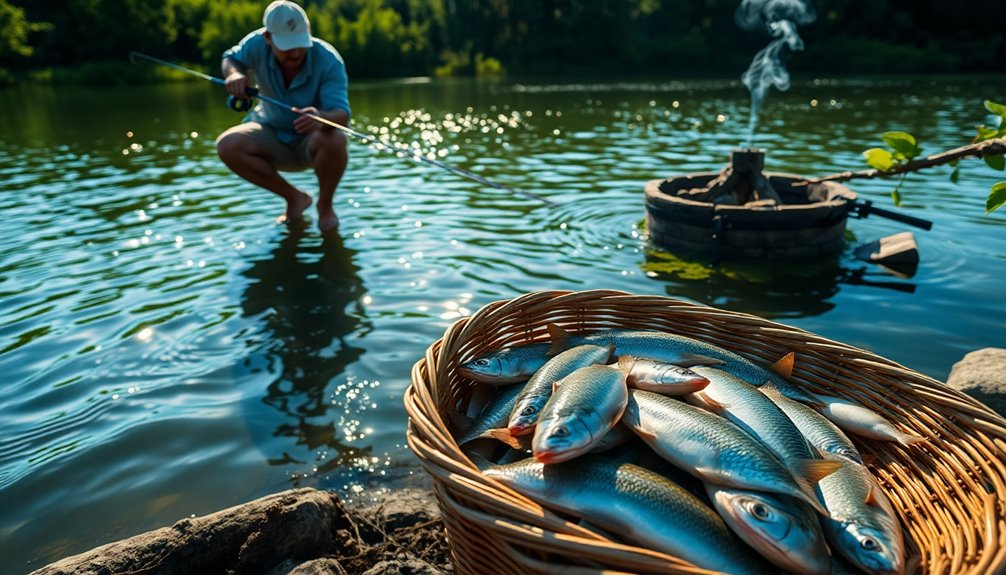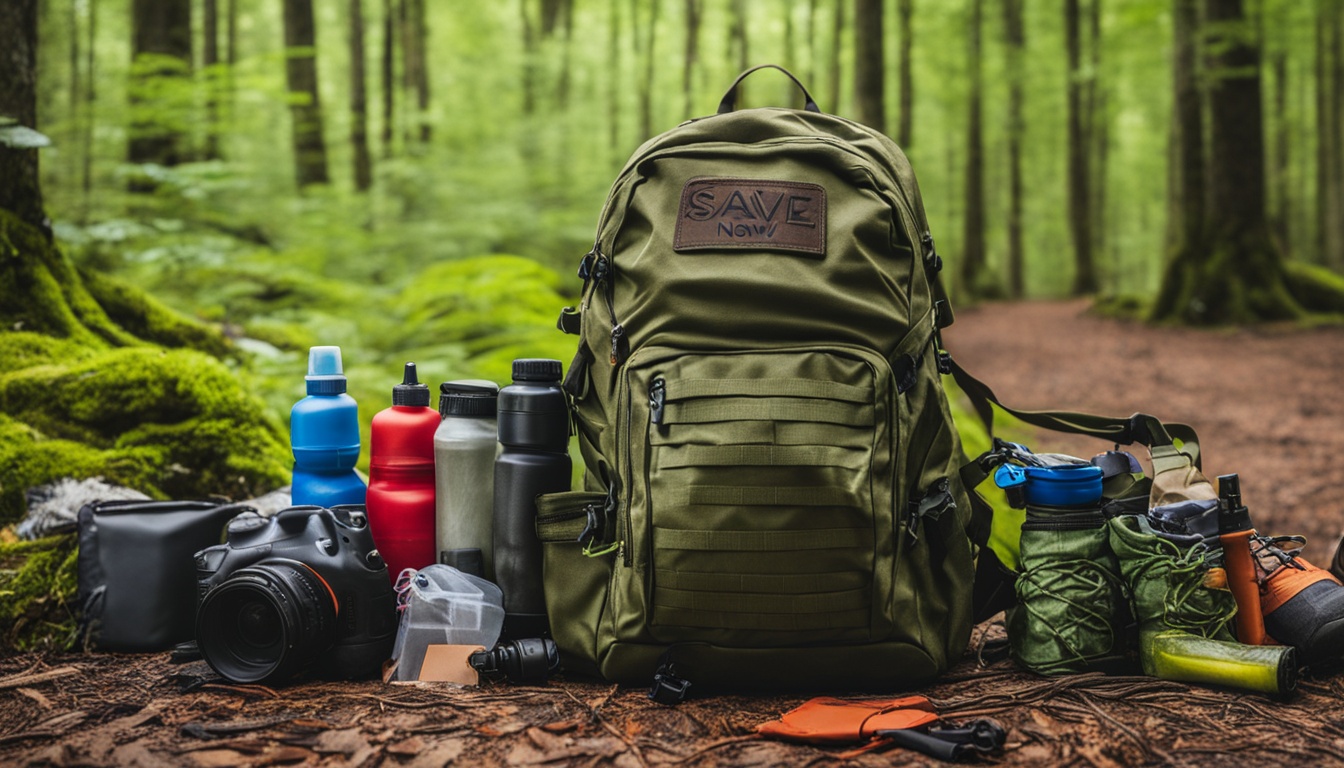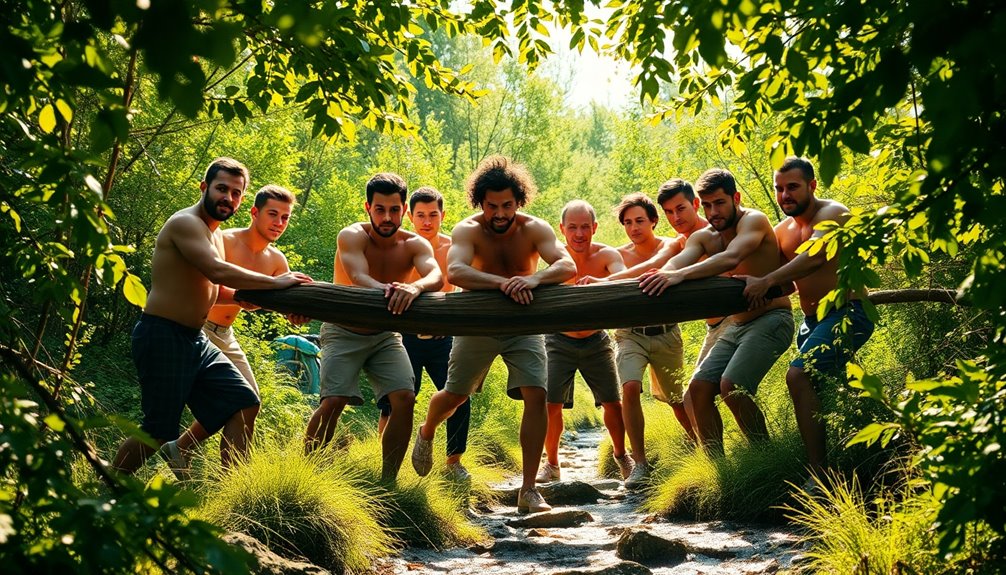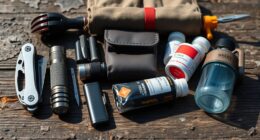To effectively find and prepare nourishment in survival situations, you need to master several skills. Start by identifying edible plants, using field guides to avoid toxic look-alikes. When hunting small game, choose the right equipment and look for signs of activity. Don’t overlook insects, as they’re a sustainable protein source packed with nutrients. Fishing can be productive, too; learn various methods to catch aquatic foods. Finally, develop cooking techniques, focusing on fire-building and food preservation methods. Embracing these skills will greatly enhance your survival experience, and you’ll uncover more tips to thrive in the wild. Learning how to properly store and preserve wild foods is crucial for long-term survival. Whether it’s smoking, drying, or pickling, understanding various wild food preservation techniques can ensure you have sustenance for the long haul. Experiment with different preservation methods to find what works best for the resources available in your environment.
Key Takeaways
- Accurately identify edible plants using reliable field guides to avoid toxic look-alikes and familiarize yourself with local flora.
- Utilize effective hunting techniques, including tracking signs of activity and employing quiet stalking methods for small game.
- Explore sustainable insect consumption, as insects are high in protein and minerals while requiring fewer resources to farm.
- Implement various fishing methods, such as hand fishing and traps, adapting techniques to local aquatic environments for effective catch.
- Master cooking skills like fire building and food preservation techniques to prepare and maintain nourishment sustainably.
Identifying Edible Plants

Identifying edible plants is essential for safe foraging and survival. You need to be 100% certain of a plant's identity to avoid toxic look-alikes that could harm you. Start by using reliable field guides like *Newcomb's Wildflower Guide* or *Peterson's Field Guide to Edible Wild Plants*. Familiarize yourself with plants common in your region to minimize the risk of misidentification. Additionally, understanding local regulations can help ensure that your foraging activities are both legal and responsible.
Enhance your observational skills by noting the plant's habitat, including sunlight and soil conditions. Pay attention to leaf characteristics, such as shape and arrangement, and examine reproductive parts like seeds and flowers for distinct identification. Check the stalk or trunk for unique traits, like spots or spines. Learning poisonous plants can significantly simplify the process of identifying edibles and is essential to avoid nausea and fatalities.
When foraging, consider starting with small portions of any new plant to gauge your body's reaction. Be aware of your allergies and always learn to differentiate between edible plants and their toxic counterparts. Check local laws regarding foraging, especially in protected areas. Remember, some plants need to be cooked before they're safe to eat, so know how to prepare them properly. With these practices, you can forage with confidence and safety.
Hunting Techniques for Small Game

When hunting small game, having the right techniques can make all the difference in your success. Start by selecting appropriate equipment, like rimfire rifles or shotguns, and using the right ammunition, such as size 6 to 8 shot. Camouflage clothing and waterproof boots will help you blend into your surroundings.
Here's a quick reference table for essential hunting techniques:
| Technique | Description |
|---|---|
| Signs of Activity | Look for tracks, scat, and feeding areas. |
| Quiet Stalking | Move slowly and quietly using natural cover. |
| Blinds and Stands | Set up in ground blinds or tree stands. |
| Shot Placement | Aim for clean kills by targeting specific areas. |
Understanding the habitat of your target species is vital. For instance, squirrels prefer mid to late-succession forests, while rabbits thrive in open, brushy environments. Employing trained hunting dogs can enhance your success rate as they help track and flush out game. Always practice firearm safety and mark where your game falls for easy retrieval. Remember, compliance with local hunting regulations is essential. Happy hunting!
Insects as a Food Source

While hunting small game provides a sustainable food source, exploring alternative proteins can expand your survival options. Insects are a fantastic choice, as they're packed with protein—some species boast up to 60% dry weight protein. They also offer essential minerals like iron, zinc, and magnesium, often outmatching traditional livestock. For instance, termites deliver protein levels similar to dried saltfish and exceed that of beef. Additionally, insect farming is an efficient way to produce food with minimal environmental impact.
The environmental benefits of consuming insects are significant. Insect farming requires far less land, water, and feed compared to raising cattle, and it emits 80 times less methane than beef production. Plus, they can thrive on agricultural waste, cutting down on food waste and enriching soil with their droppings, known as frass.
Culturally, around 2 billion people eat insects worldwide, with certain species regarded as delicacies. Embracing insects in your diet doesn't just enhance your nutrient intake; it also aligns with sustainable practices. As the global insect protein market grows, incorporating insects into your survival strategy could prove both nutritious and environmentally responsible. So, don't overlook these tiny powerhouses when considering food sources in a survival scenario.
Fishing Methods and Aquatic Foods

Fishing can be an essential skill in survival situations, providing a rich source of protein and vital nutrients. You can employ various fishing methods, both active and passive, depending on your environment and available resources.
For active fishing, try hand fishing for catfish by reaching into their hiding spots. Spearfishing requires stealth and a sharp spear, while bowfishing demands skill in accounting for water refraction. If you're in shallow water, fish striking with a heavy club can effectively stun larger fish. Throwing rocks is another simple method to catch fish in streams. Hand fishing is one of the oldest methods and can be quite effective when targeting catfish.
On the passive side, consider building fish traps using containers or natural materials to funnel fish. Fishing weirs can also help trap fish in streams. Eel traps and bush lines offer simple setups for catching smaller fish, while gill nets are efficient for passive fishing.
You can create homemade fishing gear, like gorge hooks from twigs or sharpened sticks for spears. Look for ideal fishing locations such as deep holes, rock pools, and areas where water depth changes, as these spots often attract fish and enhance your chances of a successful catch.
Cooking and Food Preparation Skills

Cooking and food preparation skills are vital for turning your catch into a nourishing meal in a survival situation. First, mastering fire building is essential; gather dry wood and leaves to get your fire going. Set up your cooking area downwind to avoid smoke in your living space. Use cast iron pans or grates for effective campfire cooking, guaranteeing safety and efficiency.
You can also get creative with natural materials. Flat stones make excellent griddles, while green sticks serve as skewers. Try foil packet cooking by sealing veggies or fish in foil and placing them directly on the fire. For a unique twist, consider ash cooking—wrap food in non-poisonous leaves and bury it in hot ashes.
Don't forget about food preservation. Dehydrate fruits and meats for lightweight, long-lasting supplies. Salting and pickling add flavor and extend shelf life. When it comes to cooking methods, stewing allows nutrient retention, while pit cooking provides slow, even heat. Sustainable practices are crucial for ensuring that your hunting and fishing efforts do not deplete local resources, allowing you to thrive in the wild. Whether you're spit-roasting a whole animal or grilling over an open flame, these skills will help guarantee you stay nourished in the wild.
Frequently Asked Questions
What Are the Best Tools for Gathering Wild Edible Plants?
When gathering wild edible plants, you'll want to equip yourself with essential tools. A pruning knife and shears work well for cutting stems and leaves, while a hori hori digging knife helps you dig tubers. For collecting, use a basket or mesh bag to keep your finds fresh. Don't forget a field guide or app to identify plants safely. Protective gloves can protect you from thorns and other hazards during your foraging adventures.
How Can I Store Food for Later Use in Survival Situations?
"An ounce of prevention is worth a pound of cure." To store food for later use in survival situations, choose airtight containers like Mylar bags or food-grade buckets. Keep them in cool, dry places, away from heat and light. Label each container with details, and use oxygen absorbers to prolong shelf life. Regularly check for spoilage and rotate your supplies, ensuring everything stays fresh and ready for when you need it.
What Are the Signs of Food Spoilage in Wilderness Conditions?
When you're in the wilderness, keep an eye out for signs of food spoilage. If you notice a foul or sour smell, that's a warning. Unpleasant tastes or a slimy texture indicate microbial contamination. Look for unnatural colors or visible mold; these are clear indicators. Also, be aware of environmental conditions like high moisture that can speed up spoilage. If pests are nearby, it's time to discard the food. Stay cautious!
Can I Eat Food That Has Fallen to the Ground?
You shouldn't eat food that's fallen to the ground. Germs transfer to food almost instantly, and even a small amount of bacteria can cause illness. While unbruised fruit that just fell might seem safe, it's best to err on the side of caution. Mold and toxins can develop quickly, especially in damaged or rotting pieces. Always prioritize your health; if it's been on the floor, it's better to toss it out.
How Do I Identify Poisonous Plants in the Wild?
Imagine strolling through lush greenery, vibrant colors surrounding you, yet danger lurks beneath the surface. To identify poisonous plants, look closely at their leaves, stems, and flowers. For instance, poison hemlock features fern-like leaves and hollow stems with purple spots. Giant hogweed boasts thick, ridged stems and large flower clusters. Always trust your instincts—if you're uncertain, steer clear. Remember, knowledge is your best protection against these hidden hazards in nature.
Conclusion
Incorporating these food survival skills into your knowledge can be life-changing, especially when you consider that over 90% of the world's edible plants are still unharvested. Imagine wandering through a forest, surrounded by a bounty of untapped nourishment, just waiting for you to discover it. By honing your ability to identify, gather, and prepare food from nature, you're not just surviving—you're thriving. So get out there and embrace the adventure of finding your next meal!










